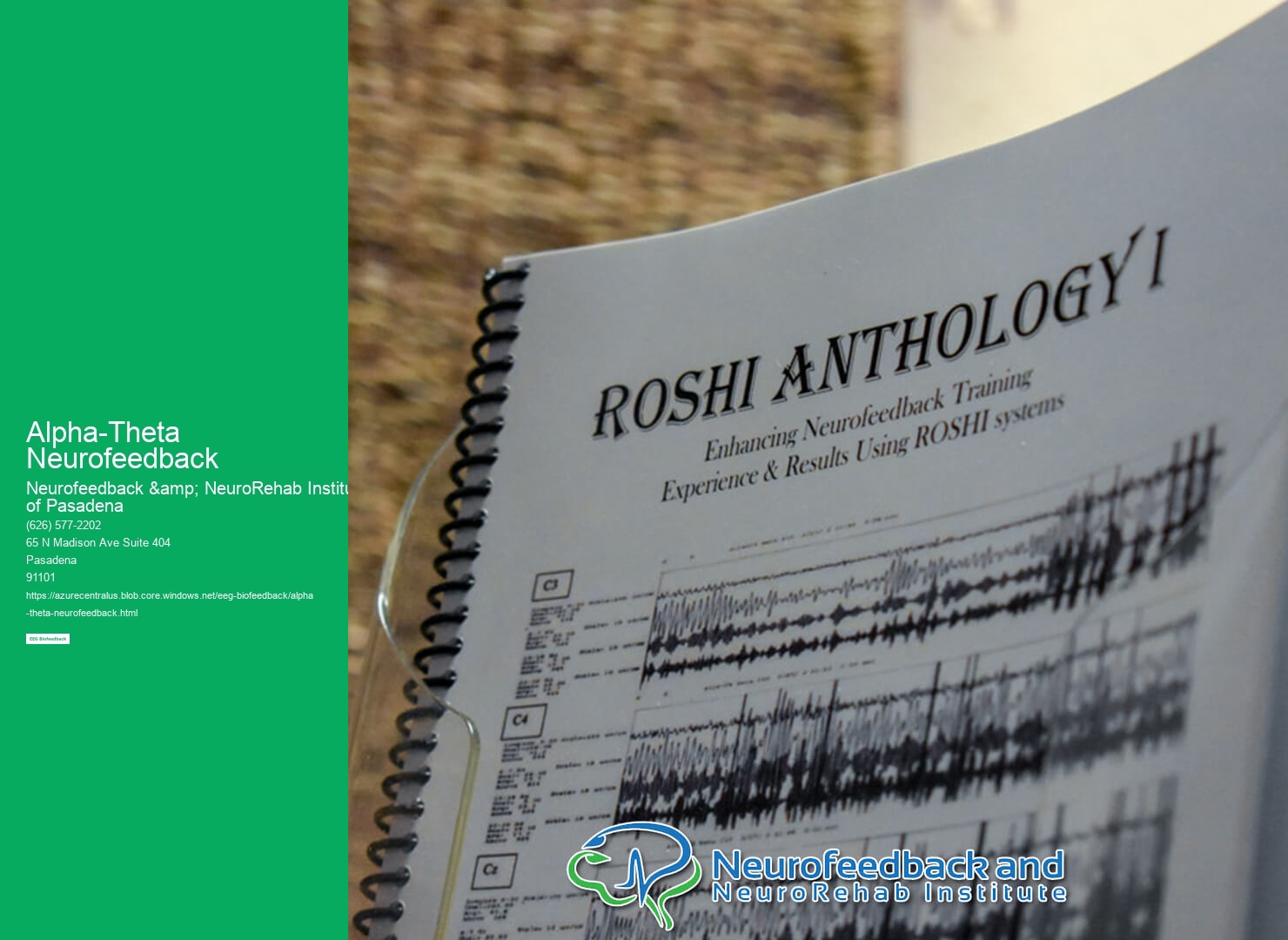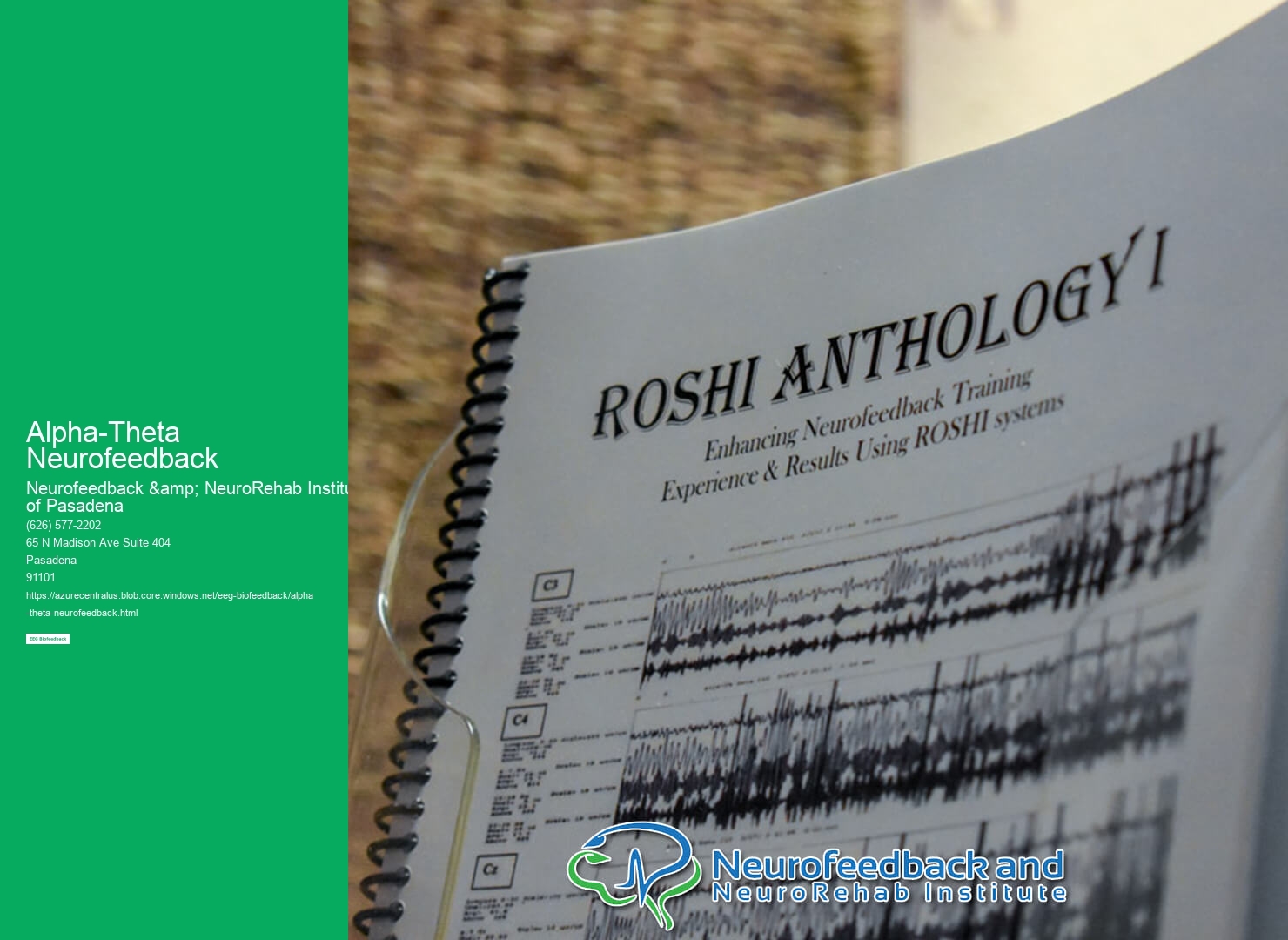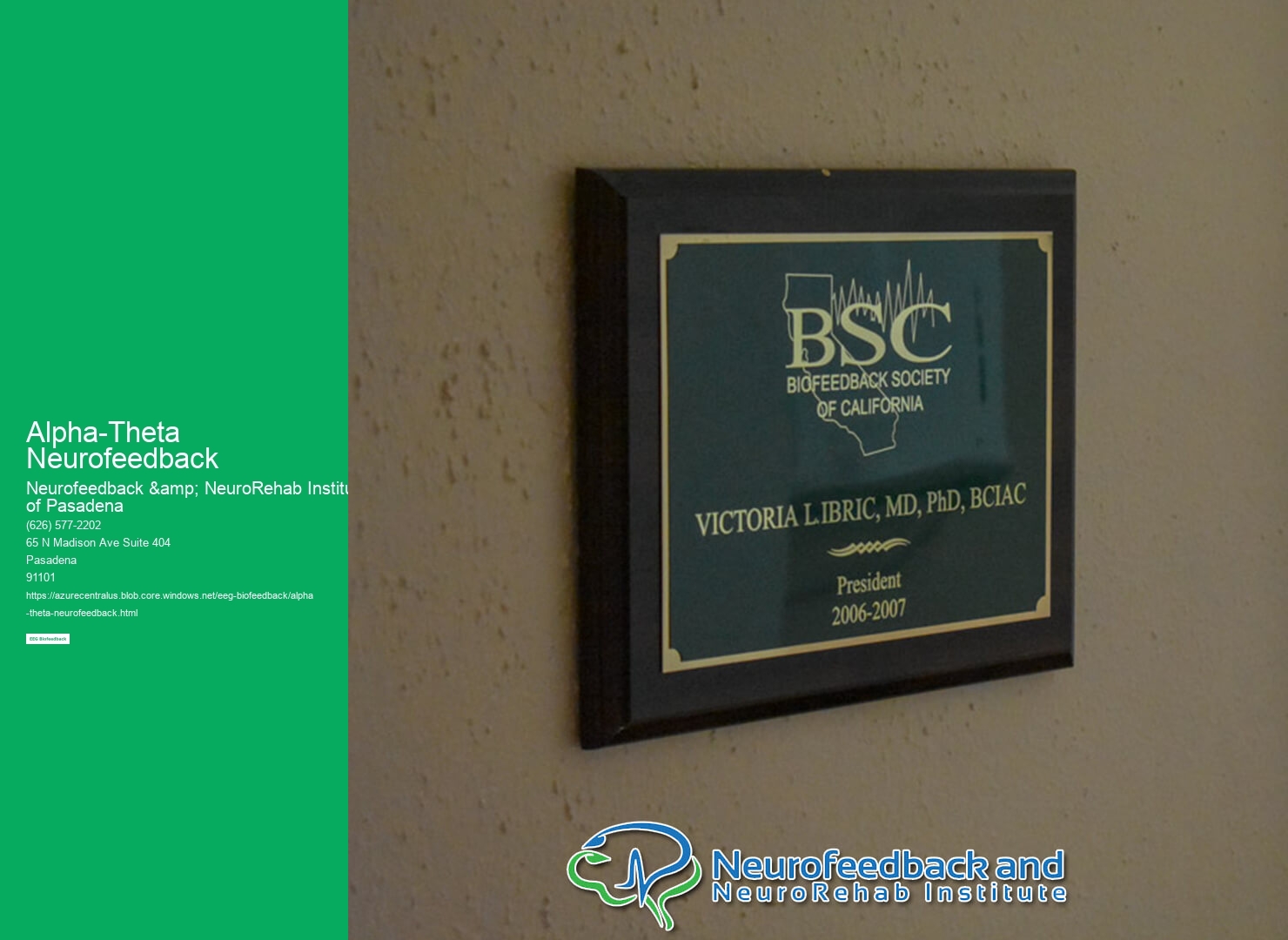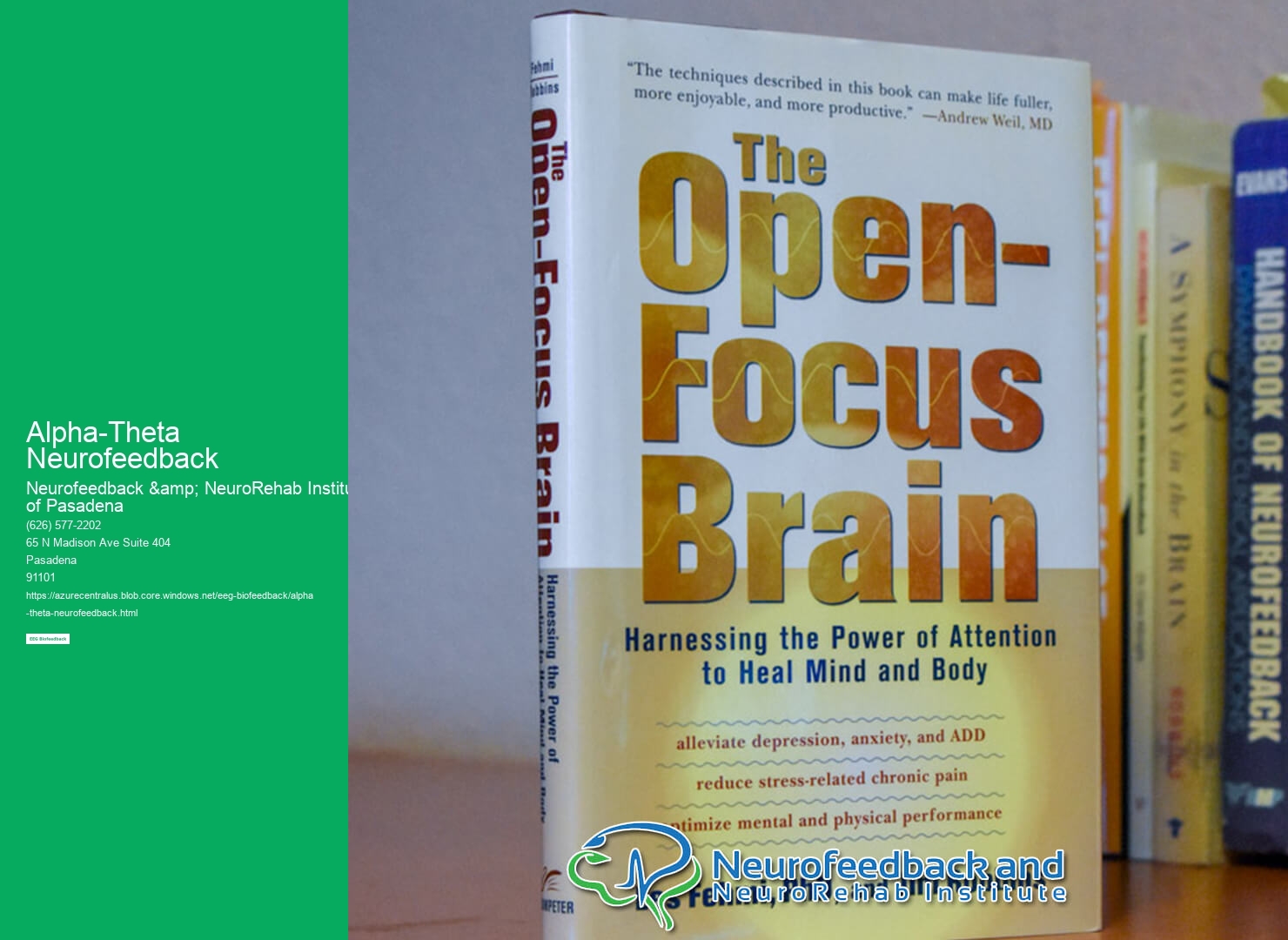

Alpha-theta neurofeedback is a type of neurofeedback therapy that aims to train the brain to achieve a state of deep relaxation and enhanced creativity. It involves monitoring the brain's electrical activity using an electroencephalogram (EEG) and providing real-time feedback to the individual through visual or auditory cues. During the session, the individual is encouraged to reach a state of relaxed awareness, where alpha and theta brainwave patterns are dominant. The feedback helps the individual learn to self-regulate their brainwave activity and achieve a desired state of consciousness.
There are several potential benefits of alpha-theta neurofeedback. Firstly, it can help reduce stress and anxiety by promoting relaxation and improving emotional regulation. It may also enhance creativity and problem-solving abilities by facilitating access to the subconscious mind. Additionally, alpha-theta neurofeedback has been used to address sleep disorders, such as insomnia, by promoting a state of deep relaxation conducive to restful sleep. Some individuals have reported improvements in mood, focus, and overall well-being after undergoing alpha-theta neurofeedback sessions.
Alpha-theta neurofeedback is generally considered safe and well-tolerated. However, as with any therapeutic intervention, there may be some risks and side effects. These can include temporary fatigue, drowsiness, or mild headaches immediately following a session. In rare cases, individuals may experience increased emotional sensitivity or temporary exacerbation of symptoms. It is important to work with a qualified professional who can monitor the sessions and adjust the treatment plan as needed to minimize any potential risks or side effects.

The time it takes to see results from alpha-theta neurofeedback can vary depending on the individual and their specific goals. Some individuals may notice improvements after just a few sessions, while others may require more extensive training over a period of several weeks or months. Consistency and regularity of sessions are key factors in achieving optimal results. It is important to have realistic expectations and understand that neurofeedback is a gradual process that requires time and commitment.
Alpha-theta neurofeedback can be used to address a variety of conditions and symptoms. It has been used as a complementary therapy for anxiety disorders, depression, post-traumatic stress disorder (PTSD), attention deficit hyperactivity disorder (ADHD), and substance abuse disorders. It may also be beneficial for individuals seeking personal growth, increased self-awareness, and improved overall well-being. However, it is important to note that alpha-theta neurofeedback should not be used as a standalone treatment and should be integrated into a comprehensive treatment plan tailored to the individual's specific needs.


While alpha-theta neurofeedback is generally safe for most individuals, there are certain individuals who may not be suitable candidates for this treatment. People with epilepsy or a history of seizures should avoid alpha-theta neurofeedback, as it may potentially trigger seizures or interfere with anti-seizure medications. Additionally, individuals with certain psychiatric conditions, such as schizophrenia or bipolar disorder, may require careful evaluation and monitoring before undergoing neurofeedback therapy. It is important to consult with a qualified healthcare professional to determine if alpha-theta neurofeedback is appropriate for an individual's specific circumstances.
Alpha-theta neurofeedback can be used in conjunction with other alternative treatments or therapies to enhance results. For example, mindfulness meditation, relaxation techniques, and biofeedback training can complement alpha-theta neurofeedback by promoting relaxation and self-regulation skills. Cognitive-behavioral therapy (CBT) or other forms of talk therapy can also be integrated to address underlying psychological factors contributing to symptoms. Additionally, lifestyle modifications such as regular exercise, healthy diet, and adequate sleep can support the effectiveness of alpha-theta neurofeedback. It is important to work with a healthcare professional who can provide a comprehensive treatment plan tailored to the individual's needs and goals.

EEG biofeedback, also known as neurofeedback, is a non-invasive technique that can be used to treat a variety of neurological conditions. It involves monitoring and providing feedback on brainwave activity in order to train the brain to function more efficiently. This technique has been found to be effective in the treatment of conditions such as attention deficit hyperactivity disorder (ADHD), autism spectrum disorder (ASD), anxiety disorders, depression, and post-traumatic stress disorder (PTSD). By targeting specific brainwave patterns associated with these conditions, EEG biofeedback can help individuals improve their attention, focus, emotional regulation, and overall cognitive functioning. Additionally, it has been used to alleviate symptoms of migraines, chronic pain, and sleep disorders. Overall, EEG biofeedback offers a promising approach for the treatment of various neurological conditions, providing individuals with a non-pharmacological and personalized treatment option.
Yes, there are standardized assessment tools commonly used to evaluate the effectiveness of EEG biofeedback. These tools include measures such as the EEG Power Spectral Analysis, which assesses the distribution of different frequency bands in the brain's electrical activity. Another commonly used tool is the Event-Related Potentials (ERPs), which measures the brain's response to specific stimuli. Additionally, the Neurofeedback Rating Scale (NRS) is often used to assess changes in symptoms and functioning before and after EEG biofeedback training. These standardized assessment tools provide objective measures of the effectiveness of EEG biofeedback and help clinicians and researchers evaluate the outcomes of this intervention.
Individuals with neurodevelopmental disorders, such as autism spectrum disorder (ASD) and attention deficit hyperactivity disorder (ADHD), can potentially benefit from EEG biofeedback. EEG biofeedback, also known as neurofeedback, is a non-invasive technique that uses real-time monitoring of brainwave activity to train individuals to self-regulate their brain function. By providing individuals with visual or auditory feedback based on their brainwave patterns, EEG biofeedback aims to improve attention, reduce impulsivity, and enhance self-control. Research studies have shown promising results in using EEG biofeedback as a complementary therapy for individuals with neurodevelopmental disorders, with improvements observed in attention, behavior, and cognitive functioning. However, it is important to note that the effectiveness of EEG biofeedback may vary among individuals, and it should be used as part of a comprehensive treatment plan tailored to the specific needs of each individual.
HEG (Hemoencephalography) plays a significant role in EEG biofeedback by providing valuable information about brain activity and blood flow in specific regions of the brain. HEG measures changes in blood oxygen levels, which can indicate the level of brain activation in different areas. This information is crucial for understanding how the brain is functioning and can help identify areas of overactivity or underactivity. By using HEG in conjunction with EEG, practitioners can gain a more comprehensive understanding of brain function and tailor biofeedback training to target specific areas of the brain. This allows for more precise and effective treatment, leading to improved outcomes for individuals seeking to regulate their brain activity.
Yes, there are specific biofeedback protocols that have been developed for anxiety management using EEG. EEG biofeedback, also known as neurofeedback, is a non-invasive technique that measures brainwave activity and provides real-time feedback to help individuals learn to self-regulate their brain function. In the context of anxiety management, specific protocols have been designed to target and train specific brainwave patterns associated with anxiety, such as excessive beta activity or low alpha activity. These protocols typically involve a series of training sessions where individuals are guided to increase or decrease specific brainwave patterns through visual or auditory feedback. By learning to modulate their brainwave activity, individuals can develop greater control over their anxiety levels and experience improved emotional well-being.
EEG biofeedback, also known as neurofeedback, has shown promise in addressing symptoms of obsessive-compulsive disorder (OCD). This non-invasive technique involves monitoring and training brainwave activity to help individuals gain better control over their brain functioning. By providing real-time feedback on brainwave patterns, EEG biofeedback can help individuals with OCD learn to regulate their brain activity and reduce symptoms such as intrusive thoughts, compulsive behaviors, and anxiety. Research studies have demonstrated the effectiveness of EEG biofeedback in reducing OCD symptoms and improving overall functioning. However, it is important to note that EEG biofeedback should be used as part of a comprehensive treatment plan that may include therapy and medication, as determined by a qualified healthcare professional.
When considering EEG biofeedback for individuals with autism spectrum disorders (ASD), there are several important factors to take into account. Firstly, it is crucial to understand that ASD is a complex neurodevelopmental disorder characterized by difficulties in social interaction, communication, and repetitive behaviors. Therefore, the goals of EEG biofeedback in this population may differ from those in other populations. Specifically, the focus may be on improving attention, reducing hyperactivity, and enhancing self-regulation skills. Additionally, it is important to consider the individual's cognitive abilities, sensory sensitivities, and communication skills when designing an EEG biofeedback protocol. Tailoring the intervention to the specific needs and preferences of the individual with ASD is essential for maximizing its effectiveness. Furthermore, collaboration with other professionals involved in the individual's care, such as speech therapists and occupational therapists, can help ensure a comprehensive and integrated approach to treatment. Overall, while EEG biofeedback holds promise as a therapeutic intervention for individuals with ASD, it is crucial to consider the unique characteristics and needs of this population to optimize its benefits.